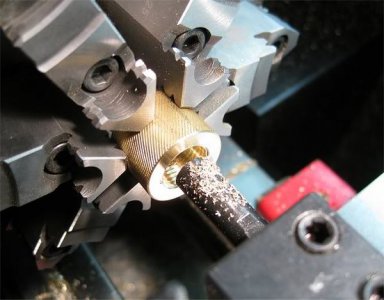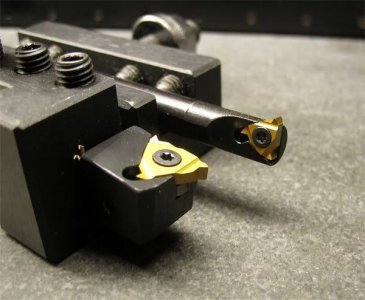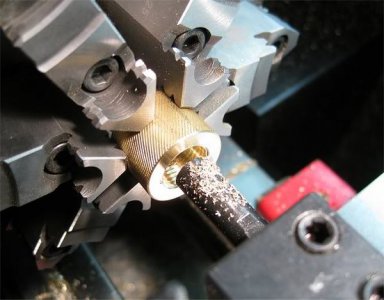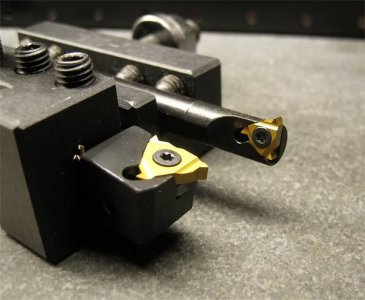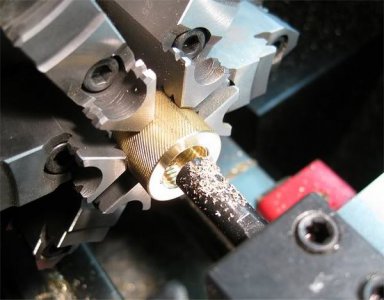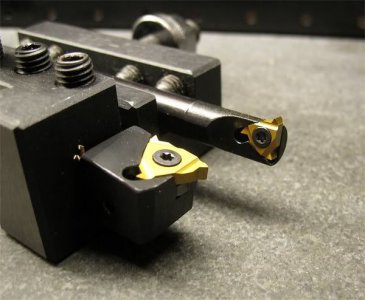- Joined
- Aug 22, 2012
- Messages
- 4,124
I'm just getting ready to cut the internal 39x4mm thread on my new backplate and I'm having a seniors moment.
Do I set the compound the opposite to external threading, ie. the handle of the compound is now on the back side of the lathe but still driving towards the headstock.
Same process as external but pull cross slide to contact, advance tool, push cross slide, reverse lathe, pull cross slide to 0, advance compound, take cut etc etc.
Hope this is understandable
Do I set the compound the opposite to external threading, ie. the handle of the compound is now on the back side of the lathe but still driving towards the headstock.
Same process as external but pull cross slide to contact, advance tool, push cross slide, reverse lathe, pull cross slide to 0, advance compound, take cut etc etc.
Hope this is understandable


